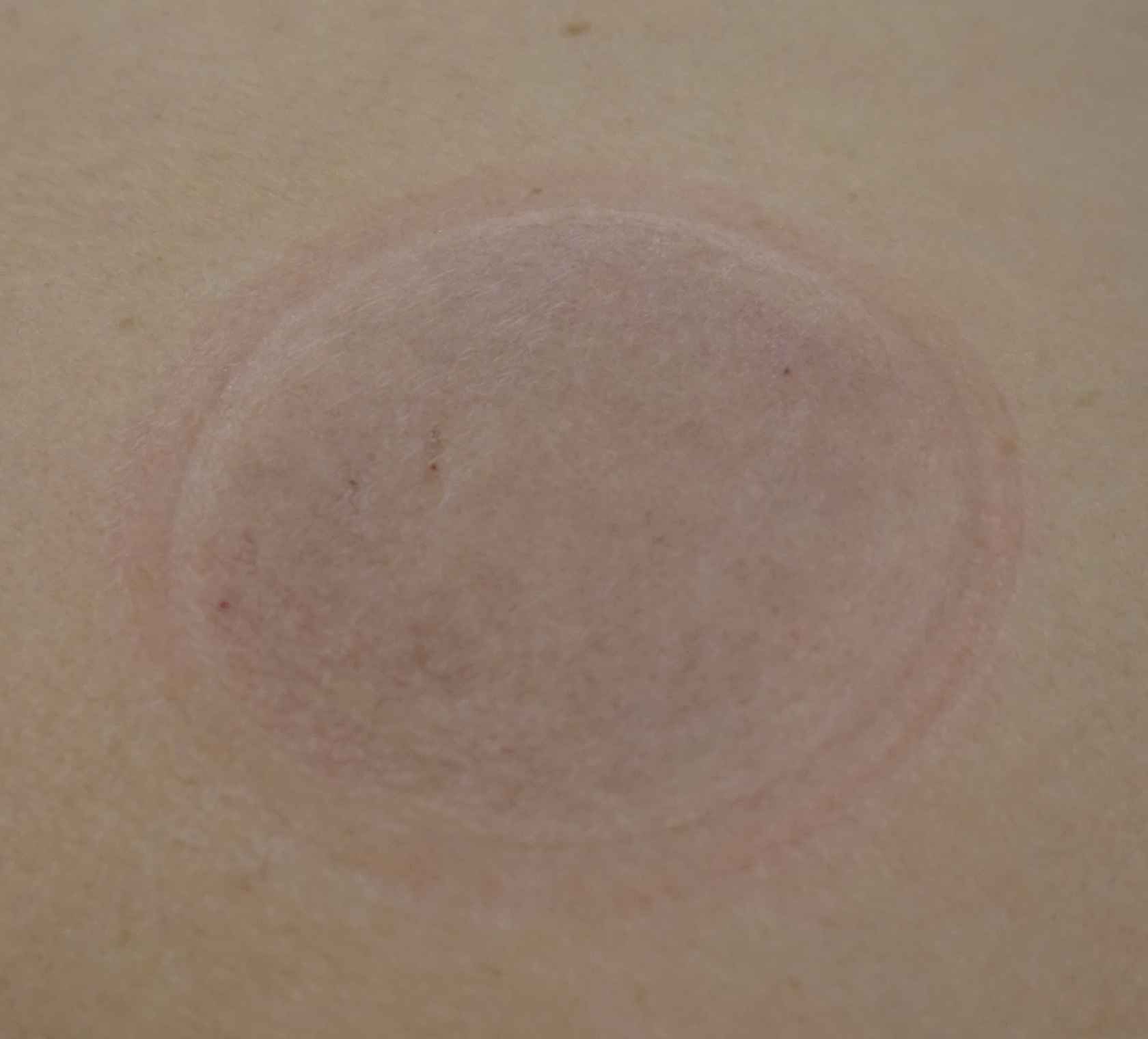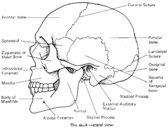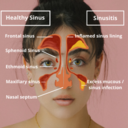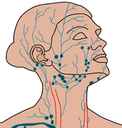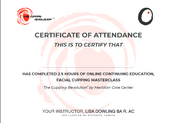Cupping marks
When we are performing facial cupping, we are strictly avoiding the creation of cupping marks. We do this by ALWAYS KEEPING THE CUPS MOVING on the face and neck.
Understanding the mechanism of cupping marks is an important part of gaining a deeper insight into the treatment you are providing.
The marks that some people get during cupping have a couple of different phases. There are different types of marks, and they occur for a few different reasons.
Let's walk through the mechanism of cupping, and what the marks represent.
When the cup is first applied, the original redness that comes to the surface is called hyperemia. It occurs on some people more than others. It has a lot to do with skin type, and the amount of heat in the local area. It also has to do with genetics. Nordic types with paler skin tend to get more hyperemia in treatments. This is a bright redness, and it spreads around the location of the cup. This can be quite intense on some people. Following is an example of the fresh cupping marks. The redness is created when the blood vessels expand, and a histamine-like substance is released, which is a sign that the immune response has just been stimulated.
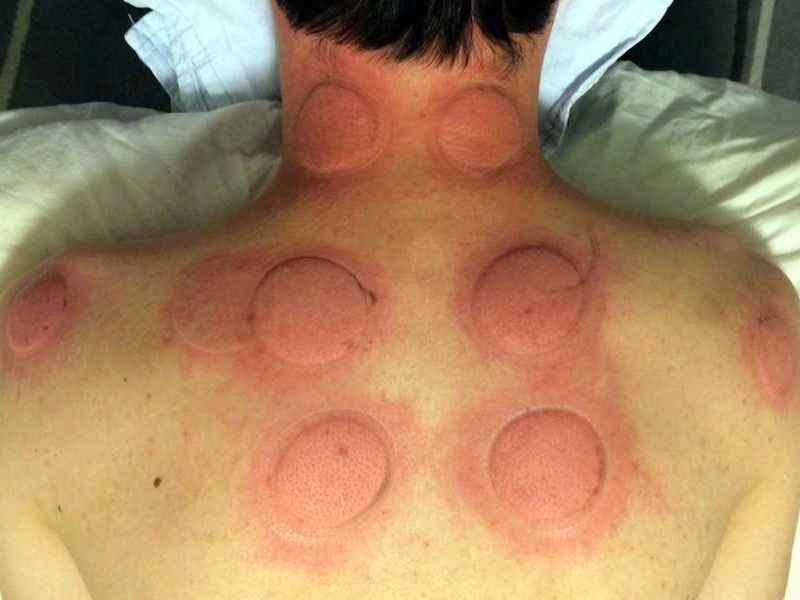
When you perform stationary cupping or moving cupping that is too deep cupping marks can appear in the next 30 seconds to few minutes.
The degree of variation of cupping marks is related to origin and skin type, medications, and those who bruise easily will get more marks than others. Those who originate from tropical and subtropical areas tend to have the heat sensors on their blood vessels closer to the surface of the skin. This is where the primary redness begins. There is a tendency for these individuals to mark quickly. If the skin changes very quickly and looks very irritated, the treatment should be stopped immediately.
In the picture below, we see cupping marks 24 hours later. We do not want to create these marks on the face!!

We tend to have an image in our minds of cupping marks. Some people find the marks quite bothersome, some don't think they are doing well unless they are achieving the dark marks. I hope by the end of this course, you understand that there is much more to cupping than creating a big red hickey on the skin!!
This deters many from the idea of facial cupping but with proper training and careful consideration, marks do not need to be an issue!
This is the cupping mark that we most often identify with:
The images below are examples of a few kinds of cupping marks. As you can see, they're not all red or purple. The treatment can still be very effective if there are not marks created.
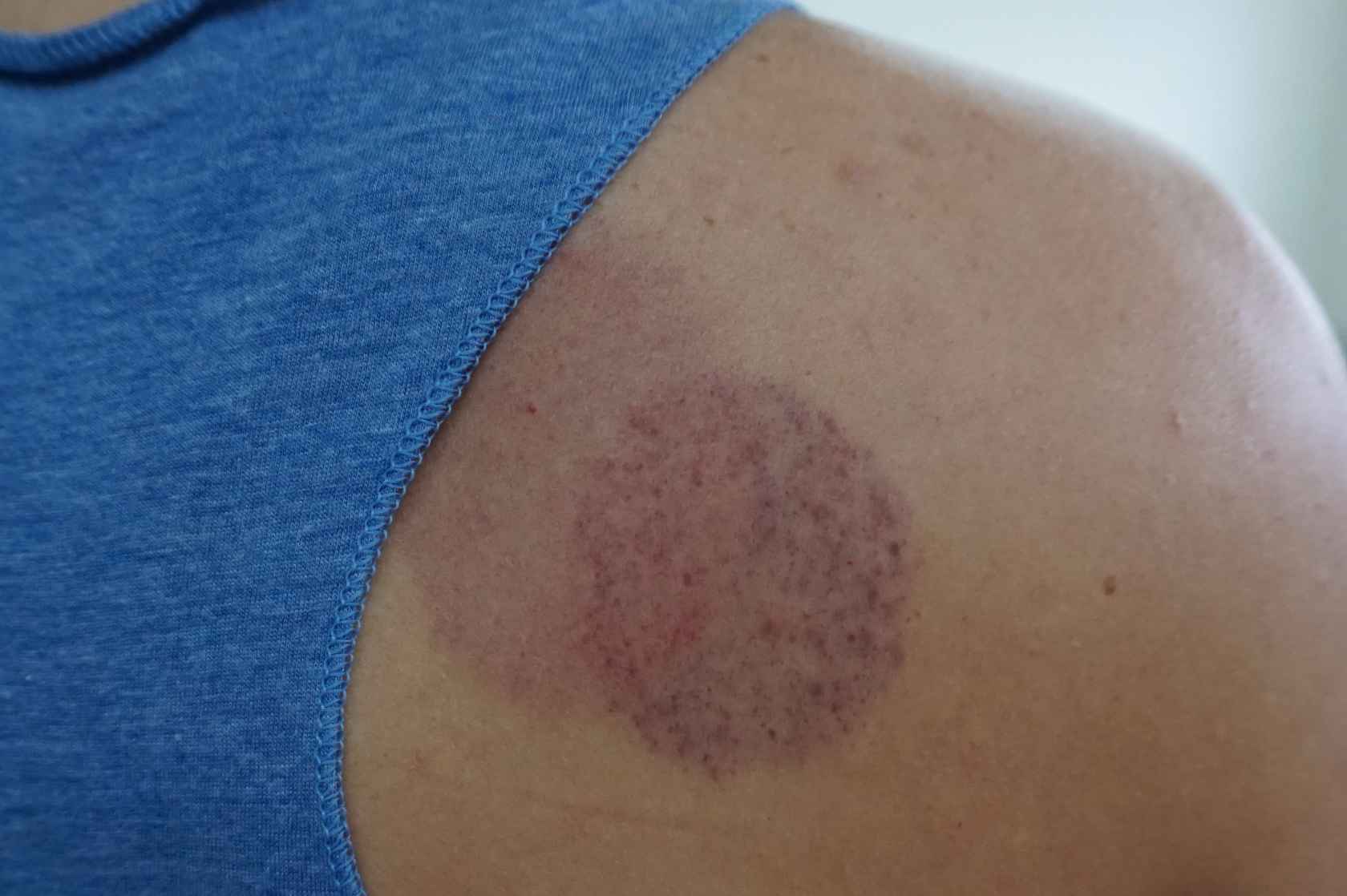
Alternately, you may see a more purple mark showing up on the body, which would indicate stagnation of blood on a deeper level.
